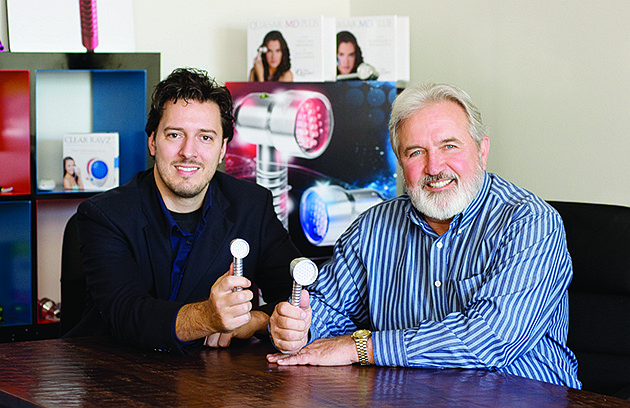- November 24, 2024
-
-
Loading

Loading

The focus at Baby Quasar for nearly a decade has been the highest of high-end markets, with a consumer anti-aging, wrinkle-reducing skin care product that retails for nearly $800.
The Manatee County-based firm has had some success in that luxury space with the device, the Quasar MD Plus, which builds collagen in a user's face through advanced light technology. It's currently available online and in Neiman Marcus, and was previously sold at Nordstrom and Harrods in London.
But the firm recently added a new wrinkle to its long-term strategy: It has gone mass-market.
Baby Quasar now offers several more products, under its Light Rayz line, that start at $249. It also now has scaled down versions of its Quasar MD Plus, for $349. Executives at the firm, with eight fulltime employees, are working on deals to get these lines into a host of retail outlets, including Target and cosmetics chain Ulta.
“We have a lot of great growth opportunities,” says Alex Webster, Baby Quasar vice president of Internet sales and marketing. “We have a lot of dreams to grow really big in the next few years.”
Yet there's sizable risk in launching a line of lower-priced products because it can cannibalize sales of the higher end. The big differences between the lines, says Webster, is the Quasar MD Plus that sells for $795 is made with anodized aluminum and comes with a lifetime warranty. Light Rayz products are made from sturdy plastic, and carry a five-year warranty.
“They do similar things and they offer similar treatments,” Webster says. “We are trying to separate the brands.”
The technology behind all of Baby Quasar's products stems from light therapy. The devices stimulate cells in a person's skin and supporting tissue that absorb wavelengths of light energy into fuel that can increase cellular metabolism. That increase in cells, the company says, produces new collagen and elastin. That, in turn, provides healthy skin. The process, adds company executives, is safe, pain-free and costs less than laser skin resurfacing and facelifts.
“We are taking the same technology in spas and salons,” says Webster, “and bringing it into the home.”
But while devotees rave about the benefits, marketing and consumer education has long been a challenge, even before the new markets. That goes back to 2005, when Webster's father, technology entrepreneur Peter Nesbitt, founded the firm. The company, which declines to disclose specific revenue figures, moved from Louisiana to Sarasota in 2007. The products are now assembled, packaged and shipped from the Manatee County facility, near the Sarasota-Bradenton International Airport.
“Light technology isn't a household name,” says Baby Quasar Executive Vice President Frank Kramer. “It doesn't roll off the tongue.”
The company has tackled its marketing challenges through a series of moves. It recently added three salespeople, for example, and it also launched a new branding campaign. The focus:
Show people what the products can do, from customers to employees at stores where Baby Quasar products are sold. “It's not an impulse buy,” Webster says. “It's an educational purchase.”
One other goal for Baby Quasar is more global sales. More than 95% of current revenues come from domestic markets. But South America, particularly Peru and Brazil, are key targets in the near future, says Kramer.
Webster and Kramer also believe more potential for Baby Quasar lies in new products from the same technology that can help people with hair, nails and even blood flow. Says Kramer: “We
are about to get a lot of momentum.”
Follow Mark Gordon on Twitter @markigordon